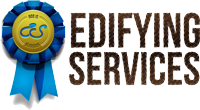Arrival of a new wonder: school
In the summer of 1894, a ship arrived off the coast Sivukuk, but this time it did not bring any trading goods for the Eskimos. Instead it brought them a gift: two teachers to set up a school.
Vern Gambell and his wife came, ready to teach the Eskimos reading and writing in English to prepare them for the modern world that would soon invade their island and culture.
As the boat brought the teachers to shore, Woolunga stepped forward. “Welcome,” he said and reached out his hand. Vern was relieved that someone spoke English and grasped his hand with enthusiasm.
“Thank you,” he said, “We have come to set up a school.”
“What is a school?” asked Woolunga.
“It’s a place where the children can learn to read and write, to learn about the wider world.” Behind them, the sailors unloaded a large pile of baggage and supplies belonging to the teachers. Woolunga nodded like he understood, which he didn’t.
“We will help you carry this to the village,” Woolunga said, and gave instructions in Yupik to his people. They gathered around and each took a box or bag or keg.
“It is good for our children to know English,” commented Woolunga. “I will help you. Come to my house.” As they walked up towards the village, the other Eskimos crowed about and welcomed them by using the few English words they’d learned from the sailors, none of which were printable! Vern and his wife were shocked by this flood of profanity and quickly turned to follow Woolunga into the village.
“Why did your people use all those bad words in talking to us?” Vern asked when they’d gotten into the house.
“Those are the only words many know, they learned from the sailors. Some we may use, but don’t know the meaning,” Woolunga replied sheepishly. “This was their way of welcoming you, using your language.”
Vern shook his head. He could see that he had a long road ahead of him, and he thanked God for Woolunga, who was his window into the culture and language.
They stayed with him for a few days and then arranged to use an old abandoned house as their home and school. The Eskimos helped to fix it, repairing the roof and cleaning it out.
After they had settled in, setting up a pot-bellied stove and placing all their many boxes around the edge of the main room, they invited Woolunga to visit.
“We would like to begin teaching your people,” said Vern. “And this is the most important book we will use.” He held up a Bible.
“So that is a book,” exclaimed Woolunga. “I’d heard about books. May I look in it?” He took it in his hands and opened to the middle of the book, running his finger over the page. “What are these strange drawings?” he asked.
“It is language written down. These pictures tell us of a message from God.”
“God?” asked Woolunga. “Do you mean Apa and his helper? But they are distant and not helpful to us in our weakness. We cannot trust them and they have no interest in us. Instead we must deal with the spirits who surround us.”
Vern shook his head. “The God of the Bible is different. He loves us, wants a relationship with us and is trustable.”
Woolunga’s face lit up. “Ah, you mean that your Apa cares for his people! I have not heard of that before and want to hear more of this God!”
Picture: inside of an Eskimo house, the type the teachers used for their home and school


